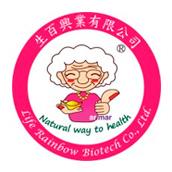Check out what is new in Mycotoxins
Find the best technical articles, forums, and videos on Mycotoxins at Engormix. Enter now and interact with the world's largest agricultural social network.
INTRODUCTION A Rising Call To Action As government-mandated and industry-driven hazard identification and prevention efforts become standard operating procedure for an expanding cross-section of the global feed industry, the need of its diverse stakeholders for fast, easy, cost-effective access to reliable aflatoxin data continues to intensify. Recognition of aflatoxins as a chemical hazard of very high concern spans the gamut of national and international...
Comments : 0
Recommendations: 0
1 - INTRODUCTION Fusarium graminearum (teleomorph Gibberella zeae) is an ascomycete fungal pathogen and the main causative agent of Fusarium head blight (FHB), or scab disease, on wheat. F. graminearum infects wheat floral tissues at flowering (anthesis), secreting many cell wall-degrading enzymes (CWDEs), other proteins and metabolites as well as mycotoxins that contaminate the developing grain, rendering it unsuitable for both human and livestock consumption (McMullen et al.,...
Comments : 0
Recommendations: 0
The continuous pursuit of a sustainable food system remains a global priority, with increased food security and minimization of postharvest loss as primary objectives. This is a critical issue, as recent estimates from the Food and Agriculture Organization (FAO) Reports on the State of Food Security and Nutrition in the World 2023 indicate that hunger affected a staggering number of individuals ranging from approximately 691 million to 783 million people in 2022, with an approximate midrange...
Comments : 0
Recommendations: 1
INTRODUCTION Aflatoxin Testing in Changing Times: The Context at a Glance As toxic contaminants of very high concern, aflatoxins stand out as a key area of focus in today’s food safety testing arena. The issues surrounding the rising importance of accurate, defensible aflatoxin test results are numerous and complex. Chief among them are a growing public awareness of the health and economic implications of foodborne toxins, the increasing globalization of the...
Comments : 0
Recommendations: 0
.jpg&w=3840&q=75)
Join Carlton Skipper, SE Sales Representative, as he introduces Fumo-V™ ONE, the groundbreaking solution for measuring fumonisin levels in complete feed and pet food formulations. ...
Comments : 0
Recommendations: 0
Introduction Fusarium head blight (FHB) is a global disease of wheat (Triticum aestivum L.), causing severe epidemics in Brazil, the USA, Canada, China and Europe over recent years [1]. FHB is caused by the Fusarium species of hemibiotrophic fungi, with F. graminearum being the most prevalent worldwide [2]. In wheat, the characteristic symptom of FHB is the bleaching of infected spikelets prior to senescence [3]. This bleaching can spread from the...
Comments : 0
Recommendations: 0
Introduction Aspergillus is a filamentous fungus that produces mycotoxins (secondary metabolites), the main contaminants of food and cause adverse effects on human and animal health. The consumption of these toxins may lead to immunosuppressive, mutagenic, and carcinogenic diseases [1]. Various species of the genus Aspergillus produce aflatoxins such as Aspergillus flavus, A. parasiticus A. nomius, A. pseudotamarii, A. bombycis, and A. ochraceoroseus [2,...
Comments : 0
Recommendations: 0
Mycotoxins in food tend to occur when specific molds and environmental conditions coexist. To ensure your operation is set up for success, testing should take place as early as possible. “Testing throughout the entirety of the supply chain—from farm to factory to finished foods—is critical because of the insidious...
Comments : 0
Recommendations: 0
.jpg&w=3840&q=75)
Join Lanny Smith, Global Sales Manager at VICAM, as he unveils how VICAM sets itself apart in the realm of mycotoxin testing solutions for the feed chain....
Comments : 0
Recommendations: 0
Tony Mcdougal, a freelance journalist, once wrote in Poultry World, "The rising demand for eggs, meat, and milk in recent decades has driven higher EU imports of grains and cereals from developing countries with more tropical climates, where the occurrence of mycotoxins is higher—thus raising the prevalence of mycotoxins in EU...
Comments : 0
Recommendations: 1
In the realm of food safety, mycotoxins present a significant challenge to manufacturers, processors, and regulatory bodies alike. These toxic compounds, produced by certain fungi under specific environmental conditions, can contaminate various food and feed products, posing serious health risks to consumers and...
Comments : 0
Recommendations: 1
INTRODUCTION Maize (Zea mays L.) is a staple food in many parts of the world including sub-Saharan Africa (SSA). In Nigeria and some other West African countries, it is traditionally transformed by submerged fermentation to ogi – a complementary weaning food for infants and young children, convenient food for the sick, convalescent and elderly or quick breakfast mostly for those living in rural areas characterized by low income (Onyekwere et al., 1989; Steinkraus,...
Comments : 0
Recommendations: 0
Introduction Modern maize, belonging to the genus Zea, was domesticated in southern Mexico 9000 years ago from wild, annual tropical grasses called teosintes, with the primary ancestor being Parviglumis (Zea mays ssp. parviglumis) which survives today in the wild (Matsuoka et al., 2002). There are additional species of teosintes that continue to grow in the wild in Mexico and Central America including the perennial Zea diploperennis (Iltis and Doebley, 1980). Following its...
Comments : 0
Recommendations: 0
In 2023 mycotoxins semiannual survey, Life Rainbow Biotech randomly collected 152 feed samples of raw materials and feed mills in farms and analyzed. The samples were tested for aflatoxins (B1, B2, G1, and G2), zearalenone, fumonisins (B1, B2, and B3), and deoxynivalenol (DON) by the ELISA Mycotoxin analysis kit. Contamination in animal feed 152 feed samples collected, and 77% were contaminated with fumonisins ( table 1 ). The maximum concentrations of aflatoxins,...
Comments : 0
Recommendations: 0
.jpg&w=3840&q=75)
Explore the world of mycotoxin detection with Colin Lee, VICAM Canada Sales Representative, as he sheds light on the innovative use of immunoaffinity columns...
Comments : 0
Recommendations: 0
INTRODUCTION Mycotoxins are substances that occur naturally in the environment (1, 2). In addition to mycoestrogens such as zearalenone (3, 4), selected trichothecenes, including DON and/or its metabolites (but in vitro), can affect steroidogenesis (2) and changes in gene expression, which suggests that these compounds could disrupt hormonal homeostasis (1). Deoxynivalenol (DON), a polar organic compound produced mainly by Fusarium graminearum and Fusarium culmorum (5), is...
Comments : 0
Recommendations: 0
.jpg&w=3840&q=75)
Join Colin Lee, VICAM Canada Sales Representative, as he delves into the intricate methodologies utilized by Canadian laboratories for comprehensive mycotoxin testing. Also, he points out the benefits of Vicam’s Immunoaffinity Columns...
Comments : 0
Recommendations: 0
Mycotoxins are secondary metabolites produced by fungi, the most abundant of which belong to the genera Aspergillus, Penicillium, and Fusarium . The conditions required for fungal development and the production of mycotoxins vary strongly with the substrate on which the fungal species develop.Because mycotoxins are mainly present in food and feed, the gut is the first target for mycotoxin toxicity, but it is also the site of the absorption of mycotoxins that leads to...
Comments : 0
Recommendations: 1
Mycotoxins are produced by fungi and can lead to sickness in humans and animals, which explains why testing for them in crops, feeds, and food products is so important and is often a regulatory and customer requirement. Fortunately, testing technologies have evolved from slow, tedious, and complicated to smart, fast, and data connected. Tests vary in their performance capabilities and suitability for field, process, or lab environments. With a number of different options, you may be...
Comments : 1
Recommendations: 0
Deependra Paneru (University of Georgia) An experiment was conducted to investigate the effects of subclinical mycotoxin exposure on the growth performance and immune cell dynamics in pullets exposed to coccidiosis. Using a 2x2 factorial design, a total of 288 four-week-old Hy-Line W36 pullets were randomly allocated to four treatment groups, each containing six replicated cages with 12 birds. The experimental groups were exposed to either...
Comments : 0
Recommendations: 1





.jpg&w=3840&q=75)

.jpg&w=3840&q=75)










